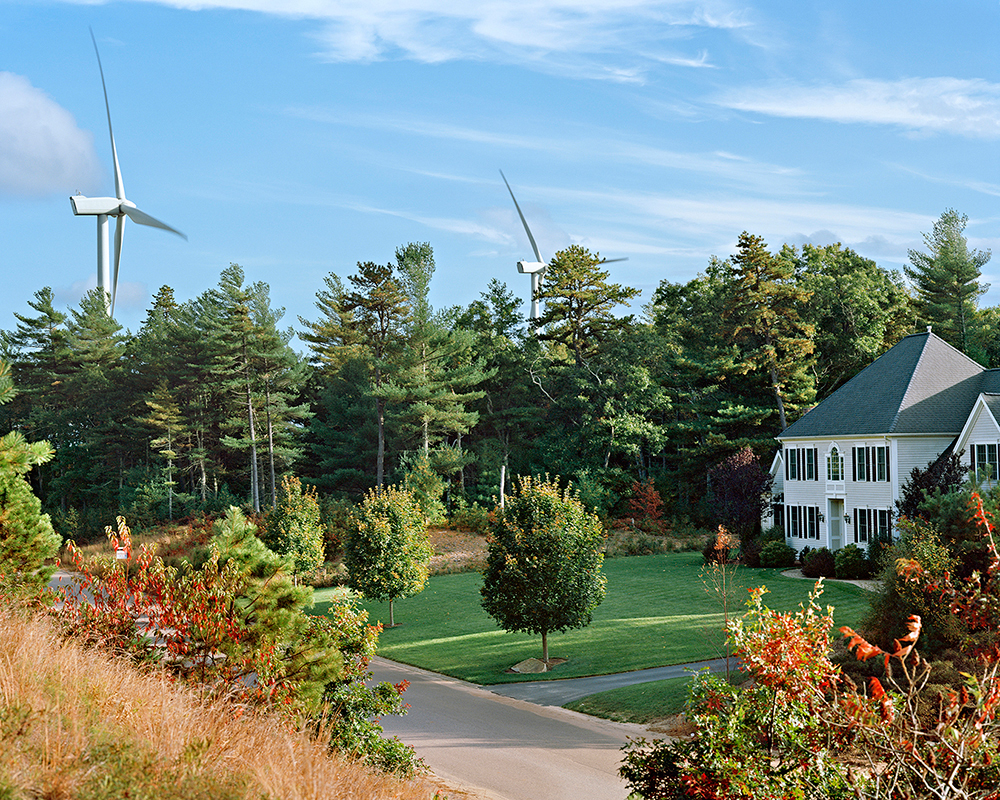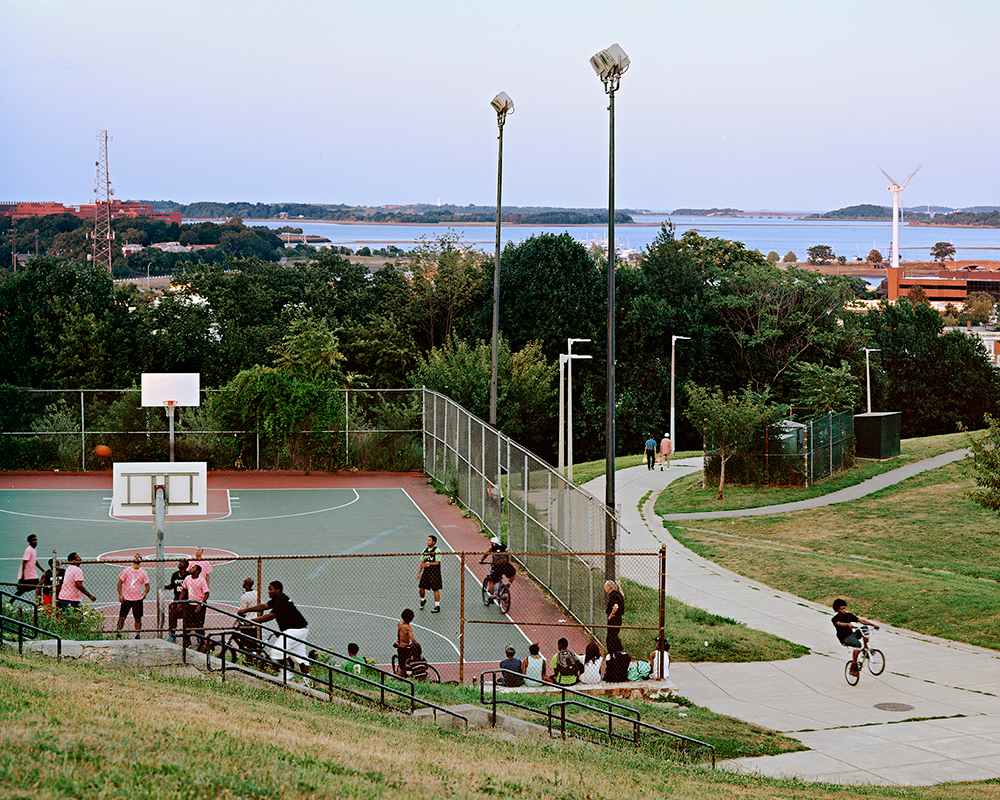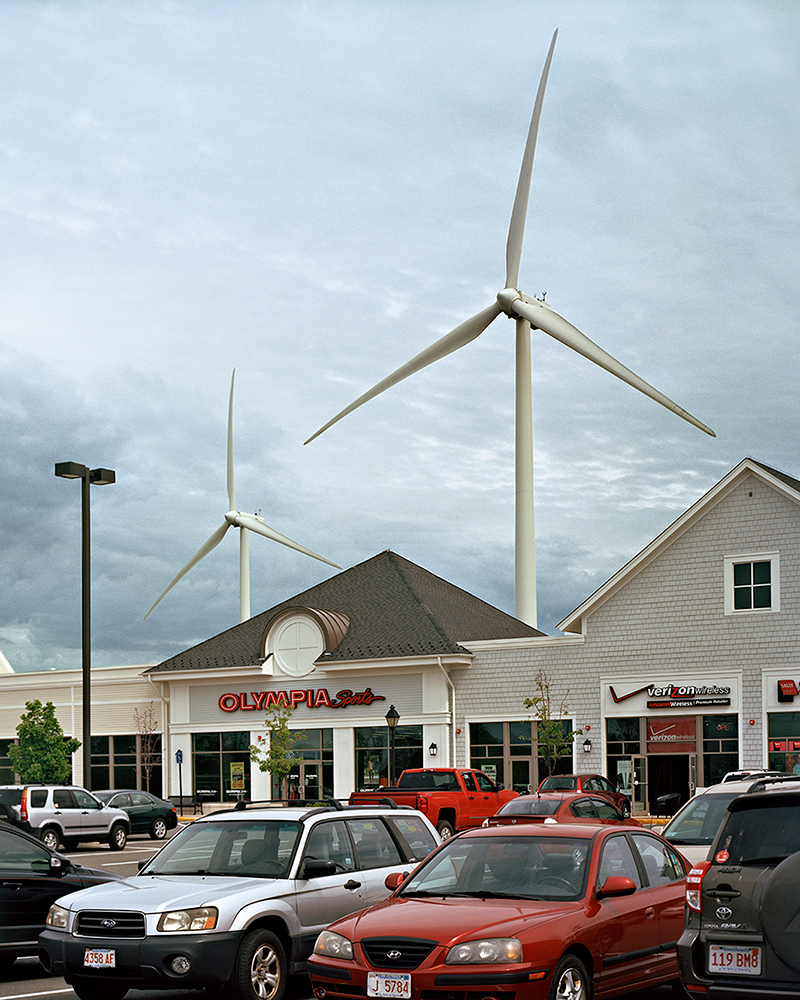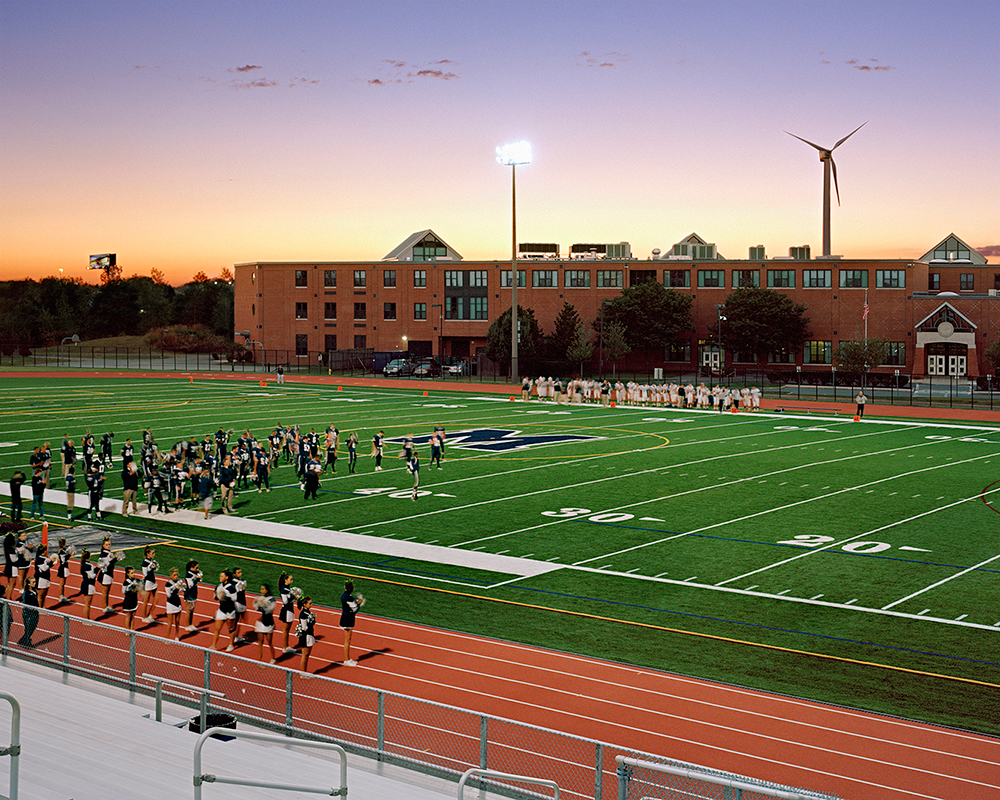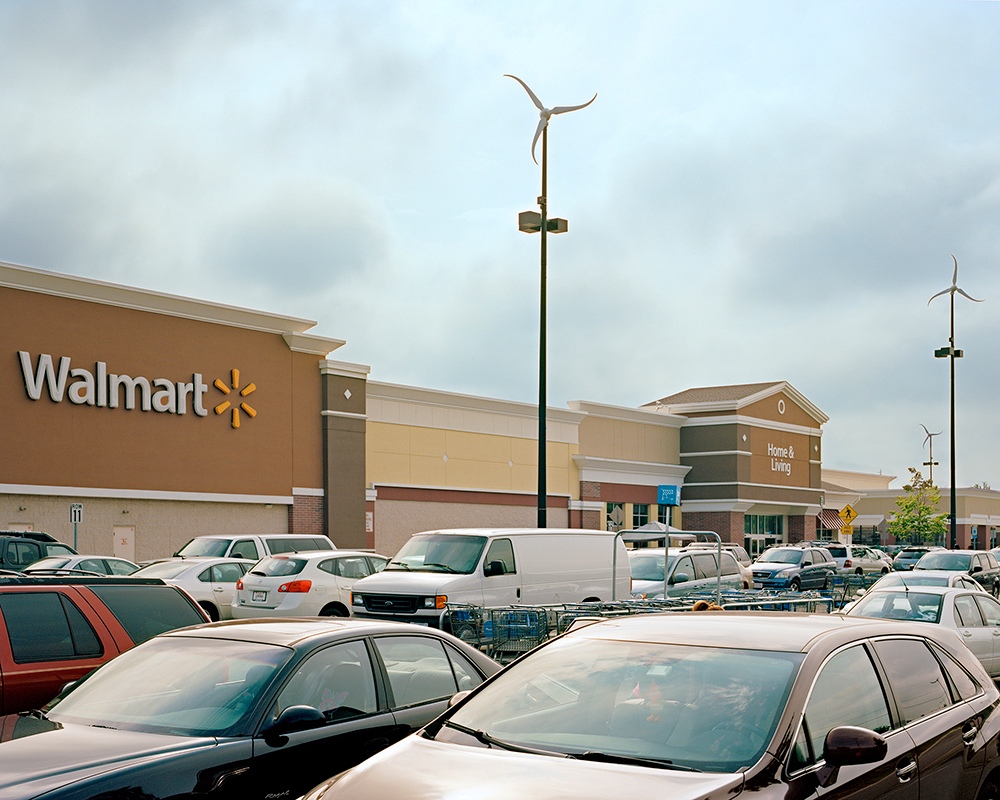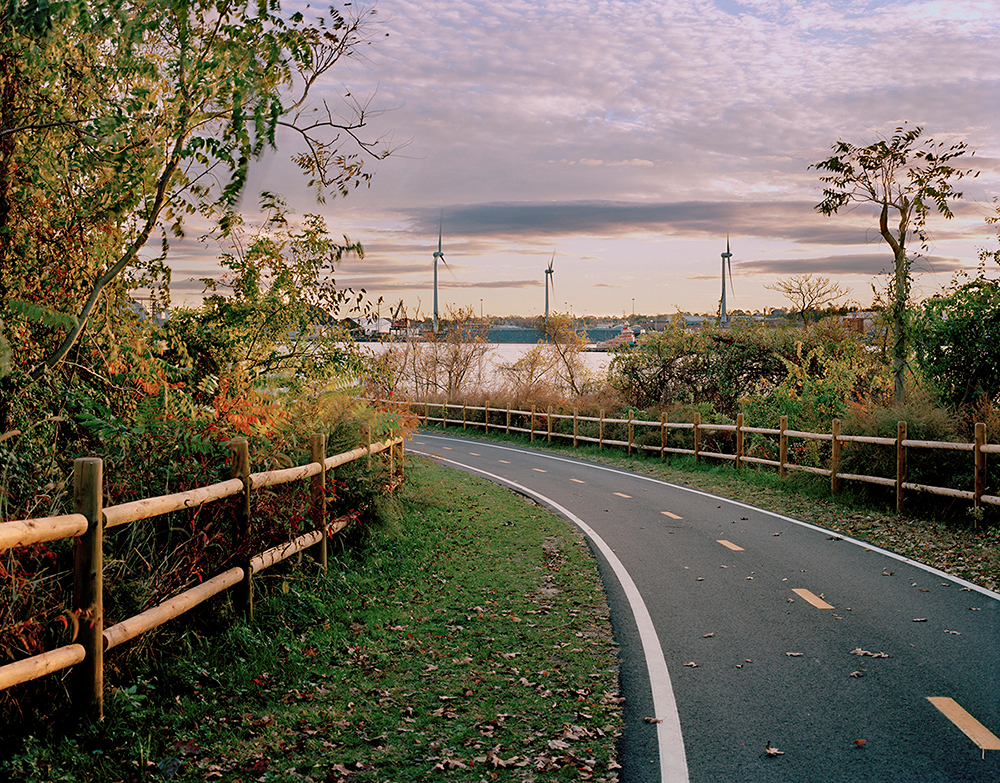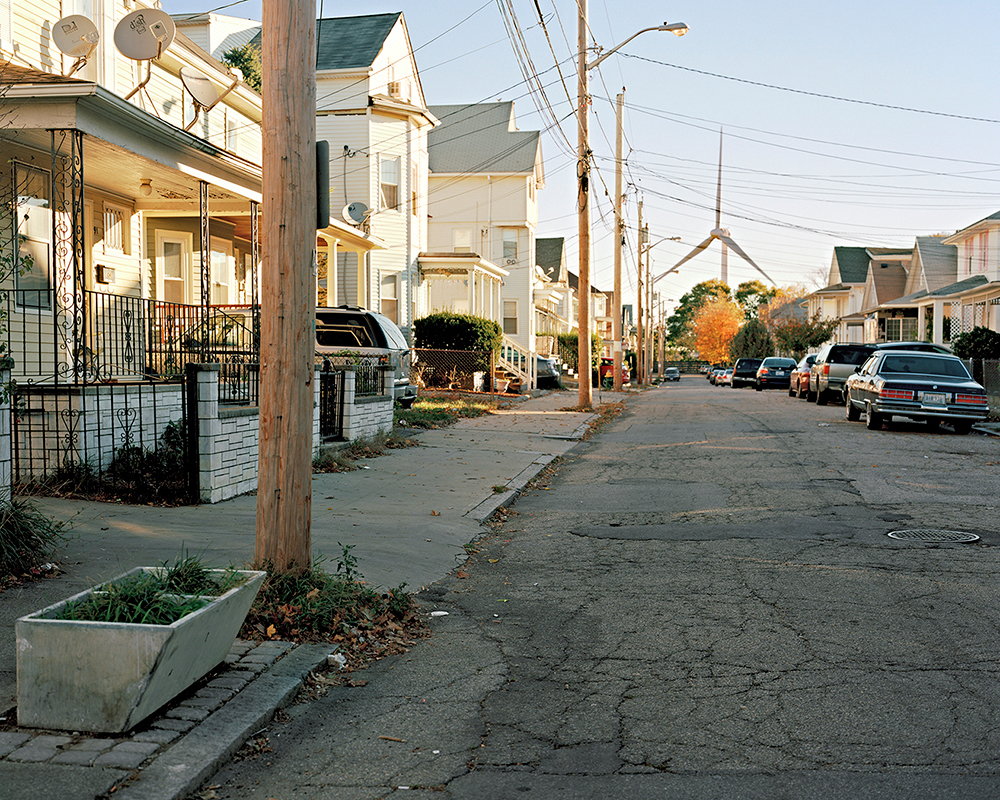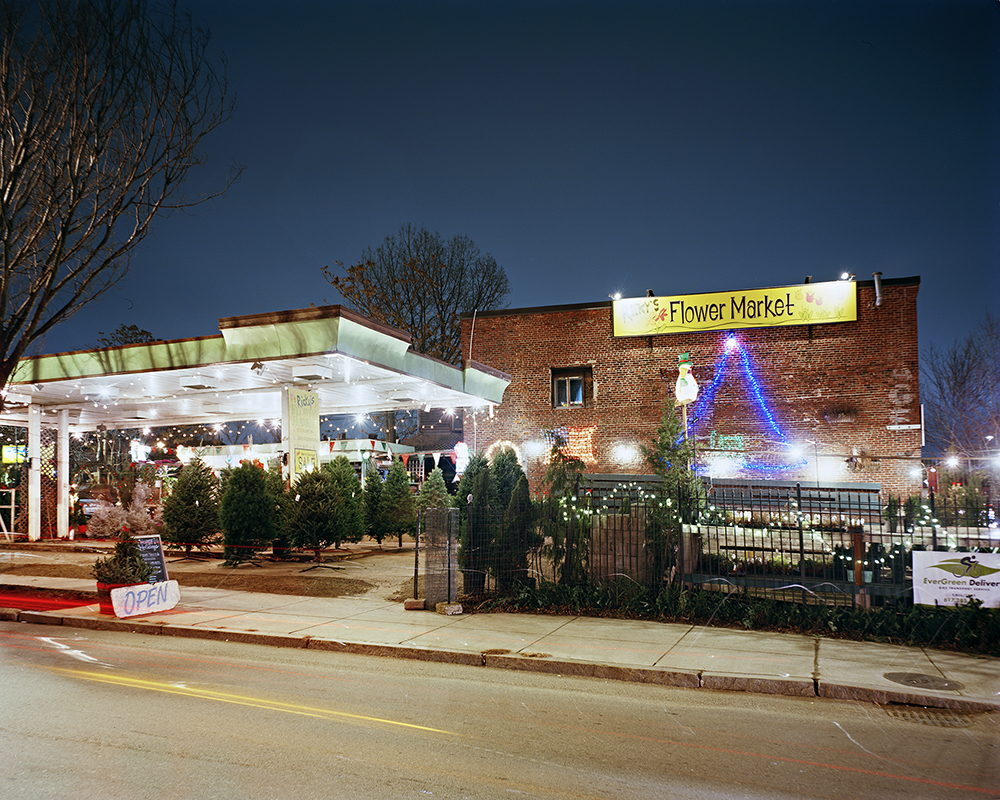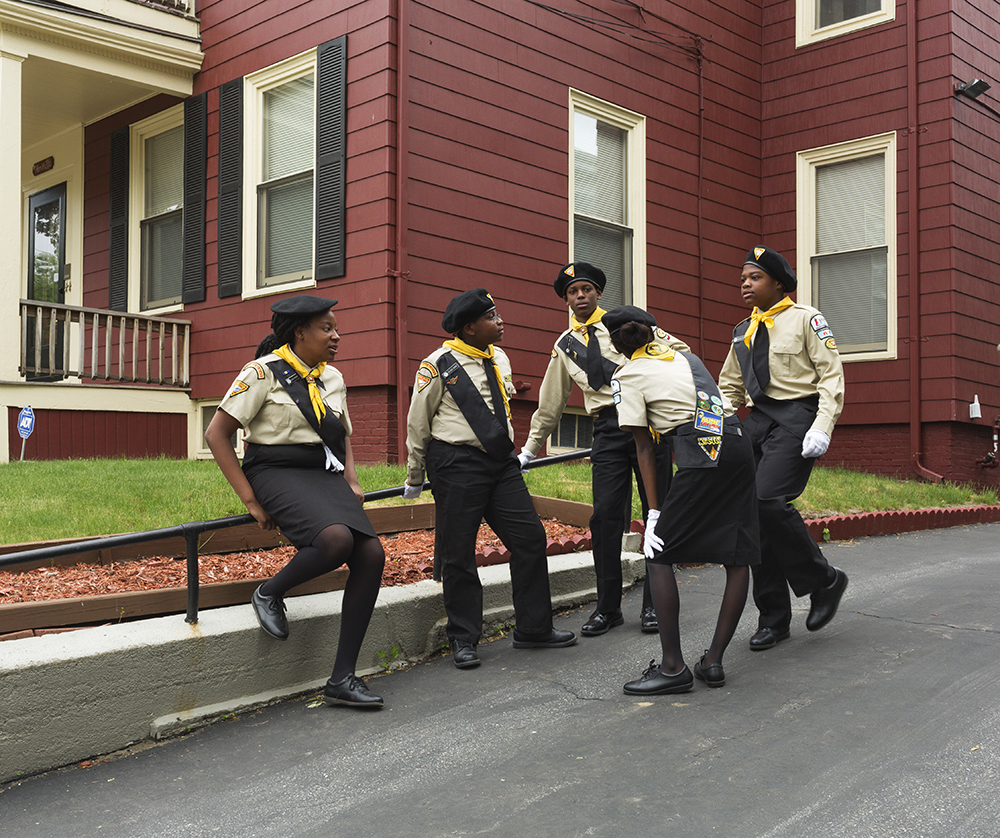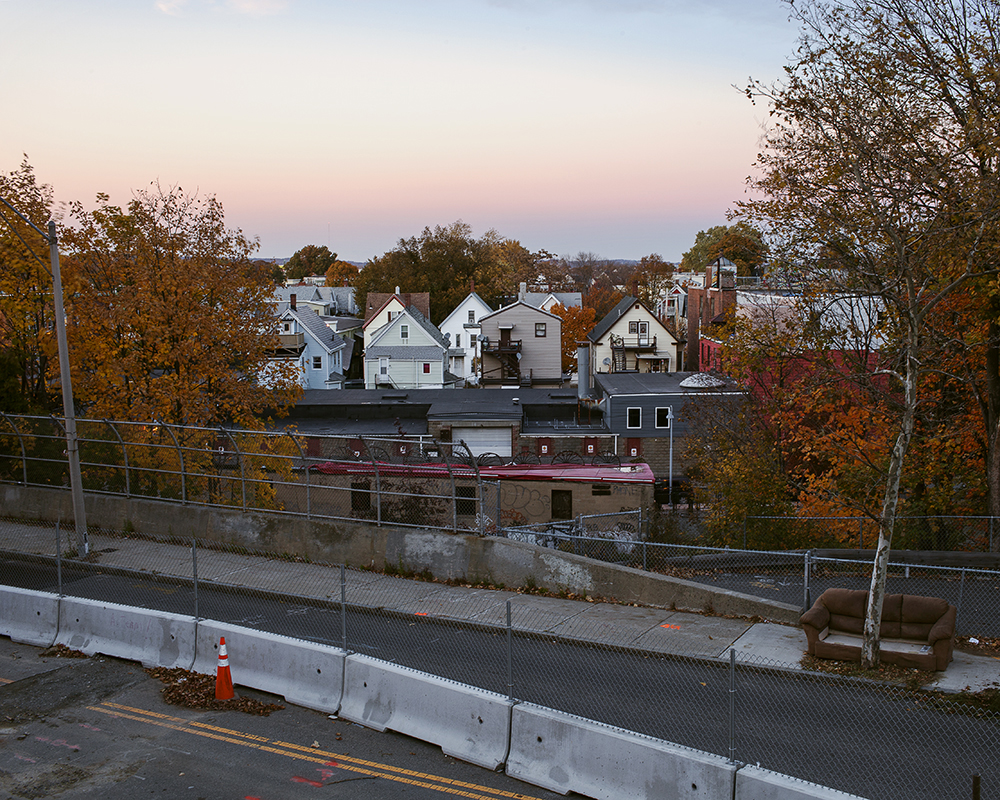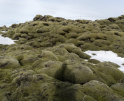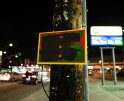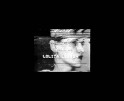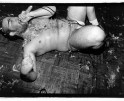Greer Muldowney: The States Project: Massachusetts
When I first met Greer Muldowney, some years ago at a Flash Forward Festival in Boston, I knew that I was standing in front of a powerhouse–whip smart, a talented photographer, and knowledgeable about all things photography. It didn’t hurt that she had a quick, sardonic wit and an incredible head of hair. Greer and I have been connected closely for a number of years and I knew she was the perfect person to offer up a platter of Massachusetts’ photographers for The States Project. She not only knows her community, but is active in promoting, curating, and supporting New England photographers. She is a working photographer, an educator, on the board of the Griffin Museum, organizes of the New England Portfolio Reviews and the Undergraduate Photography Now Exhibition, and so much more. I’m excited to celebrate Greer and her work today and look forward to the artists she will share this week. We are featuring her project, Urban Turbines, and an interview with Greer follows.
Greer Muldowney is an artist, photography professor and independent curator based in Boston, Massachusetts. She received an undergraduate degree in Political Science and Studio Art from Clark University, and an MFA from the Savannah College of Art and Design. She has acted as the Curator for the Desotorow Gallery in Savannah, GA and is the Regional Coordinator for the Flash Forward Festival on behalf of the Magenta Foundation. Muldowney also serves as an active member of the Board for the Griffin Museum of Photography, and currently teaches at Boston College, Boston University and Lesley University College of Art and Design.
Her work has been exhibited and published Nationally and Internationally. She is also the recipient of the 2013 Massachusetts Cultural Council Fellowship and a PDN 30 Photographer to watch for 2014.

Urban Turbines
For the past several years I have been photographing the emergence of wind turbines throughout the New England landscape. The resulting series of photographs, titled Urban Turbines, depict cliché images of the built landscape and architecture of this region with these new, abrupt structures. From public schools integrating turbines into their campuses and their science curriculum to coal burning energy plants erecting a structure from the most visible point on their property, turbines have become a complex new symbol of a progressive future.
The New England region of the United States is historically progressive, energy poor and densely populated along its coast. The region has recently experienced a building boom in green energy, specifically turbines placed very close to inhabited areas. The policies that surround this boom are fortified in tax breaks and federal and state grant incentives. This is bolstering public works to upgrade infrastructure and create educational facilities in green energy, but also encouraging developers to capitalize on the financial opportunities. These incentives are taking priority over land use concerns and urban planning. Ultimately, the turbine industry that has popped up in New England is not entirely based on the traditional model of sustainable wind farms found in the West, but instead individual and small clusters of turbines cropping up where opportunity of market, as well as good PR occur – opportunities that may pay off more in tax incentives to developers than useable energy in the grid. Urban Turbines illustrates how these structures have encroached on the landscape of coastal New England.
Paint us a picture of what it is like being a Massachusetts-based photographer.
This may be a paintbrush with multiple personality disorders, but in the best way possible. There is such a high concentration of artists, art schools and institutions that have bolstered both the technology and the aesthetic importance of photography it is hard to define. I would say for a small place we have a large community that has been very supportive of me as a younger artist, and I try to pay that forward as best I can.
Where did you grow up and how did you come to choose to live in Boston?
I’m originally from Ewing, New Jersey…affectionately referred to as West Trenton depending on who you ask or what side of the tracks you grew up on (literal tracks). It’s the home to The College of New Jersey and a now long defunct General Motors plant where my grandparents worked together.
Like most reasonable people from New Jersey, I had to leave, so with some fortune received a scholarship to attend Clark University in Worcester, MA and eventually that brought me to the Boston area after graduation.
I have spent most of my adult life in Massachusetts, briefly leaving for Georgia and Hong Kong, SAR to attend Savannah College of Art and Design for my MFA, and then came back right after graduation to follow a teaching opportunity. I can say without much hesitation that Massachusetts feels like the best home for me, though it still boasts a collection of people like myself who ended up adopting this place instead of being “from” here.
How did you go about selecting the photographers for this week?
This was downright crippling, but I started to think about the work that really pricked me in the last few years. I am acquainted with many, many talented photographers in the area, but ultimately I chose artists that met criteria that are important in my own work, and made me think about the expansive ways photography can dictate expression.
For anyone who knows me personally, my work or the exhibitions I have put together, I tend to see the world through political systems. The artists I chose are combining their personal narratives with political or economic forces that overwhelm me with their content. All of the work some how involved my participation or implicated me as the viewer- sometimes with humor, often with a smack of consciousness to events or identities I admittedly knew little about.
Further, I wanted to make sure that I had spoken to all of these artists personally. Some I know very well, full disclosure, and some I met after experiencing the work. I figured if an image could stay with me, give me more questions than answer, I will take the opportunity to ask those questions. Some are well-established artists who unequivocally understand their provocations, while others are using imagery in a more raw, questioning exploration of personal histories or world events.
Lastly, I think it is important to say that these artists are employing photography, but would not jump to being labeled as a photographer. I do not think photography for photography’s sake has ever been that important to me, so I hope that the Lenscratch viewers appreciate that I am showing this work to open that dialogue.
Your curatorial achievements are almost as long as your exhibition history, how do you balance the two practices?
I’ll sleep when I am dead?
I do not know if there is a balance, or if I am pulling it off, and I am ok with that. Currently I am teaching quite a bit and pushing my latest completed body of work, so aside from the annual Undergraduate Photography Now student exhibition I run, I have not had a big project in the last year, though the States Project really does fulfill this desire.
I curate when the idea strikes me, which is a luxury I realize since it is not my main form of income (or…any income), but I also know that there are career curators that do and I am constantly going to shows in pursuit of the thought process that went into assembling the exhibitions. I work from a modality that I believe is simple: when an artist strikes me and I can relate them to another artist or some grander arch of thought, I tend to have that tick until I can put those forces together. Some artists become jealous of works- we all know the twinge of being beaten to the punch or irked by the good idea before you on the wall that you felt obliged to yourself (admit it). Why not organize that work into something that can still be your own creative pursuit?
Your new series, Urban Turbines, continues your interest in the built environment. What draws you to this subject matter?
This is circuitous from my education at Clark University, where I earned a degree in Government & International Relations, concentrating in Urban Policy. Urban Policy sounds sexy at cocktail parties, but the idea of housing, zoning and development in our landscape is both interesting, politically fraught and daunting, and eventually I found that I could speak about this far better through imagery than my writing or becoming a bureaucrat (no offense to those fighting the good fight for public housing or anything else).
When I moved back to the Somerville area after graduate school, I was confronted with a 400-foot-turbine at my exit from the expressway every day, which is the first image in the series from the Mystic Power Plant. After doing some research and speaking to a friend that works within the wind industry, I kept uncovering lawsuits, questionable feasibility studies for development and lots of political rhetoric around the wind industry in New England. The series then grew from there, photographing sites with only one or a few turbines that were not truly adding to the grid but just being used for educational or PR purposes. Plus, they are such a visual abruption on the landscape I was compelled to make a record of when these structures were new- before they fade into our unconscious, like power lines or skyscrapers.
Much of my work relates back to the issues of land use and development through the gaze of the landscape. Our built environment is far more interesting to me, and has just as many consequences from an ecological standpoint as it does a socio-political one. These complexities are the challenge- how do you as an artist express these ideas visually to viewers that already have an understanding of what a city is, what a turbine is, or how their community is constructed or deconstructed around them.
What did you discover in making this work?
Homeland security is everywhere. And I also have white woman privilege and faculty IDs to great Universities that have gotten me through some tense questioning.
I mostly discovered how people would react to the work and how that eventually influenced how I spoke about it. The question I have gotten most for the Urban Turbines work was, “So, do you support wind energy?” And of course I do, but it is a complicated development issue in a state that has little room or wind to sustain that kind of industry. I did have my political allegiances questioned, which was probably the most entertaining. In Massachusetts, where we are known for being quite liberal and progressive, to challenge the goodness of renewable energy can create a neo-liberal spasm that has informed me about how I want to move into my new work, which I am mostly excited about.
Anything new on the horizon?
Yes, I have started (and stalled a few times with trepidation) a new body of work I’m titling Monetary Violence about my current city of Somerville, MA.
It will be a departure for me, as I am making a narrative that I believe may end up being a book project. The imagery revolved around local politicians, sourced imagery and imagery about my home in relationship to the gentrification of this city, and how I am implicated within that story. We are a Sanctuary City with a Black Lives Matter banner that flied behind a nationally recognized mayor; a mayor who supports very aggressive eminent domain campaigns and has a 6K marketing budget. I hope to release more of this by the end of the summer of 2017.
And finally, describe your perfect day?
My grades are due the first week of May. I plan to wander all over town with a camera and some bad instagram plans by May 6th.
Posts on Lenscratch may not be reproduced without the permission of the Lenscratch staff and the photographer.
Recommended
-
William Van Beckum: Mountains Within ReachJanuary 24th, 2024
-
Toni Pepe in Conversation with Douglas BreaultMay 15th, 2023
-
Geoff Hargadon: The States Project: MassachusettsApril 29th, 2017
-
Candice Jackson: The States Project: MassachusettsApril 28th, 2017
-
Louie Despres: The States Project: MassachusettsApril 27th, 2017

